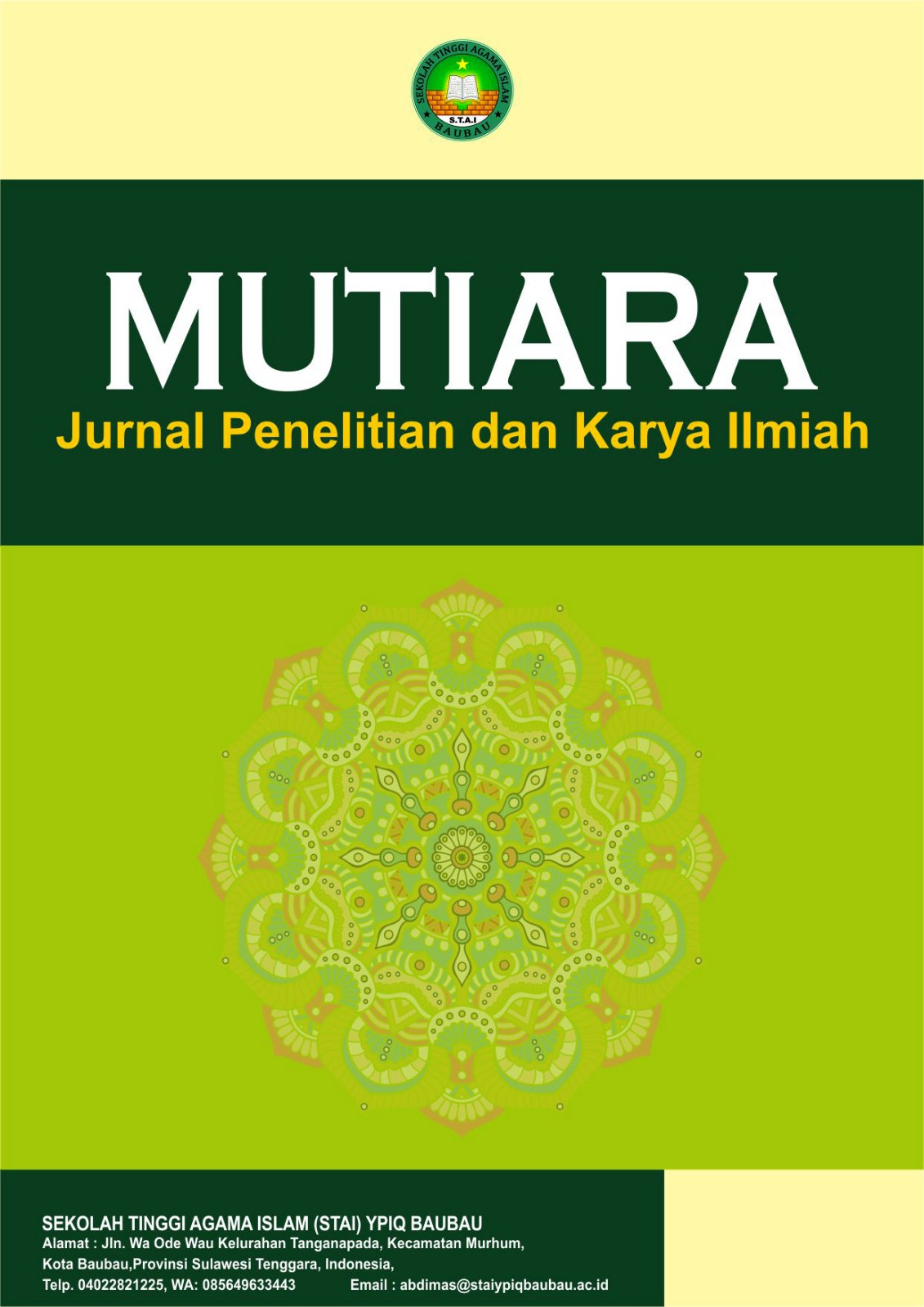Kajian Literatur Perbandingan Teknik Kecerdasan Komputasional : Jaringan Syaraf Tiruan Vs. Algoritma Evolusioner
DOI:
https://doi.org/10.59059/mutiara.v3i3.2366Keywords:
Algorithms, Artificial Neural Networks, Computational Intelligence, Evolutionary Optimization, Technique ComparisonAbstract
The rapid development in the field of Computational Intelligence (CI) has driven the use of various techniques to solve complex problems. Two main approaches that are often compared within CI are Artificial Neural Networks (ANN) and Evolutionary Algorithms (EA), each with its own strengths and limitations. Artificial Neural Networks, inspired by the structure of the human brain, operate through interconnected layers of neurons and have proven effective in pattern recognition and non-linear data modeling. Meanwhile, Evolutionary Algorithms, inspired by the process of biological evolution, are used for global solution searches in complex optimization problems without requiring mathematical derivatives of the objective function. In this study, we compare these two techniques based on architecture, model complexity, performance, and their applications across various domains. Additionally, we explore the potential of integrating both techniques into a hybrid approach that can optimize performance on more complex problems. The findings of this study indicate that combining ANN and EA, such as in neuroevolution approaches, provides more adaptive and efficient solutions compared to using each technique independently. This study offers insights into the use of ANN and EA and their applications in image processing, industrial optimization, and data-driven intelligent systems.
References
ADF, A. (2019). Annual Report Annual Report. Fresenius.Com, December, 2–2.
Bäck, T. H. W., Kononova, A. V., van Stein, B., Wang, H., Antonov, K. A., Kalkreuth, R. T., de Nobel, J., Vermetten, D., de Winter, R., & Ye, F. (2023). Evolutionary Algorithms for Parameter Optimization—Thirty Years Later. Evolutionary Computation, 31(2), 81–122. https://doi.org/10.1162/evco_a_00325
Cicirello, V. A. (2024). Evolutionary Computation: Theories, Techniques, and Applications. Applied Sciences, 14(6), 2542. https://doi.org/10.3390/app14062542
Courville, I. G. and Y. B. and A. (2016). Deep learning 简介 一 、 什么是 Deep Learning ?. Nature, 29(7553), 1–73. http://deeplearning.net/
Das, S., & Suganthan, P. N. (2011). Differential Evolution: A Survey of the State-of-the-Art. IEEE Transactions on Evolutionary Computation, 15(1), 4–31. https://doi.org/10.1109/TEVC.2010.2059031
Daun, M., Grubb, A. M., Stenkova, V., & Tenbergen, B. (2023). A systematic literature review of requirements engineering education. In Requirements Engineering (Vol. 28, Issue 2). Springer London. https://doi.org/10.1007/s00766-022-00381-9
Ding, S., Li, H., Su, C., Yu, J., & Jin, F. (2013). Evolutionary artificial neural networks: a review. Artificial Intelligence Review, 39(3), 251–260. https://doi.org/10.1007/s10462-011-9270-6
Gavrilescu, M., Floria, S.-A., Leon, F., & Curteanu, S. (2022). A Hybrid Competitive Evolutionary Neural Network Optimization Algorithm for a Regression Problem in Chemical Engineering. Mathematics, 10(19), 3581. https://doi.org/10.3390/math10193581
Grigorescu, S., Trasnea, B., Cocias, T., & Macesanu, G. (2020). A survey of deep learning techniques for autonomous driving. Journal of Field Robotics, 37(3), 362–386. https://doi.org/10.1002/rob.21918
LeCun, Y., Bengio, Y., & Hinton, G. (2015). Deep learning. Nature, 521(7553), 436–444. https://doi.org/10.1038/nature14539
Li, X., Pu, R., & Yuan, Y. (2022). Deep Neural Networks for Stock Market Prediction. 2022 International Conference on Computers, Information Processing and Advanced Education (CIPAE), 214–218. https://doi.org/10.1109/CIPAE55637.2022.00053
Liu, J., Sarker, R., Elsayed, S., Essam, D., & Siswanto, N. (2024). Large-scale evolutionary optimization: A review and comparative study. Swarm and Evolutionary Computation, 85, 101466. https://doi.org/10.1016/j.swevo.2023.101466
López-Vázquez, G., Espinal, A., Ornelas-Rodríguez, M., Soria-Alcaraz, J. A., Rojas-Domínguez, A., Puga, H., Carpio, J. M., & Rostro-González, H. (2020). Comparing Evolutionary Artificial Neural Networks from Second and Third Generations for Solving Supervised Classification Problems (pp. 615–628). https://doi.org/10.1007/978-3-030-35445-9_42
Mirza, R., Taufiq, T., & Nurdin, N. (2022). Pemantau pH Air Tambak Udang Vaname Berbasis Internet of Things dengan Antarmuka Bot Telegram. Medika Teknika : Jurnal Teknik Elektromedik Indonesia, 4(1), 63–71. https://doi.org/10.18196/mt.v4i1.15720
Moher, D., Liberati, A., Tetzlaff, J., & Altman, D. G. (2009). Preferred Reporting Items for Systematic Reviews and Meta-Analyses: The PRISMA Statement. PLoS Medicine, 6(7), e1000097. https://doi.org/10.1371/journal.pmed.1000097
Nabipour, M., Nayyeri, P., Jabani, H., Mosavi, A., Salwana, E., & S., S. (2020). Deep Learning for Stock Market Prediction. Entropy, 22(8), 840. https://doi.org/10.3390/e22080840
Nair, B. B., Sai, S. G., Naveen, A. N., Lakshmi, A., Venkatesh, G. S., & Mohandas, V. P. (2011). A GA-artificial neural network hybrid system for financial time series forecasting. Communications in Computer and Information Science, 147 CCIS(November 2021), 499–506. https://doi.org/10.1007/978-3-642-20573-6_91
Patil, R. S., Jadhav, S. P., & Patil, M. D. (2024). Review of Intelligent and Nature-Inspired Algorithms-Based Methods for Tuning PID Controllers in Industrial Applications. Journal of Robotics and Control (JRC), 5(2), 336–358. https://doi.org/10.18196/jrc.v5i2.20850
Puspasari, H. W., & Pawitaningtyas, I. (2020). Masalah Kesehatan Ibu Dan Anak Pada Pernikahan Usia Dini Di Beberapa Etnis Indonesia; Dampak Dan Pencegahannya. Buletin Penelitian Sistem Kesehatan, 23(4), 275–283. https://doi.org/10.22435/hsr.v23i4.3672
Reddy, M. J., & Kumar, D. N. (2006). Multi-Objective Optimization using Evolutionary Algorithms. Water Resources Management, 20(6), 861–878.
Roheen Qamar, & Baqar Ali Zardari. (2023). Artificial Neural Networks: An Overview. Mesopotamian Journal of Computer Science, 2023, 124–133. https://doi.org/10.58496/MJCSC/2023/015
Serey, J., Alfaro, M., Fuertes, G., Vargas, M., Durán, C., Ternero, R., Rivera, R., & Sabattin, J. (2023). Pattern Recognition and Deep Learning Technologies, Enablers of Industry 4.0, and Their Role in Engineering Research. Symmetry, 15(2), 535. https://doi.org/10.3390/sym15020535
Simon Haykin. (2018). Neural Networks and Learning Machines. In Encyclopedia of Bioinformatics and Computational Biology: ABC of Bioinformatics (Vols. 1–3). https://doi.org/10.1016/B978-0-12-809633-8.20339-7
Srikumar, A., & Pande, S. D. (2023). Comparative analysis of various Evolutionary Algorithms: Past three decades. ICST Transactions on Scalable Information Systems. https://doi.org/10.4108/eetsis.4356
Staffs, K. (2007). Guidelines for performing systematic literature reviews in software engineering. Technical Report, Ver. 2.3 EBSE Technical Report. EBSE, January 2007, 1–57.
Taufik, T., Nurdin, N., & Taufiq, T. (2023). Penerapan Smart Wastafel Berbasis Internet of Things dengan Menggunakan Aplikasi Blynk dan Cloud. Medika Teknika : Jurnal Teknik Elektromedik Indonesia, 5(1), 67–78. https://doi.org/10.18196/mt.v5i1.19576
Yaghoubi, E., Yaghoubi, E., Khamees, A., & Vakili, A. H. (2024). A systematic review and meta-analysis of artificial neural network, machine learning, deep learning, and ensemble learning approaches in field of geotechnical engineering. Neural Computing and Applications, 36(21), 12655–12699. https://doi.org/10.1007/s00521-024-09893-7
Downloads
Published
How to Cite
Issue
Section
License
Copyright (c) 2025 Mutiara : Jurnal Penelitian dan Karya Ilmiah

This work is licensed under a Creative Commons Attribution-ShareAlike 4.0 International License.








